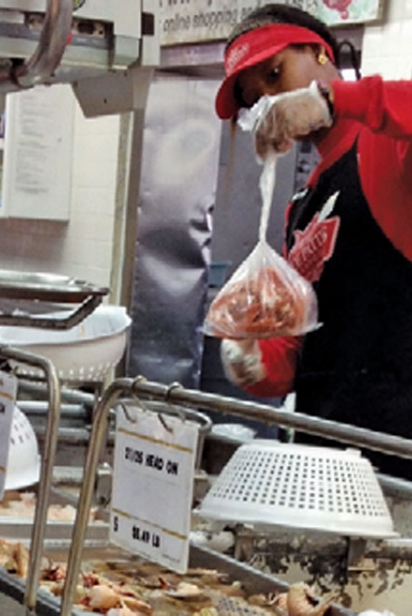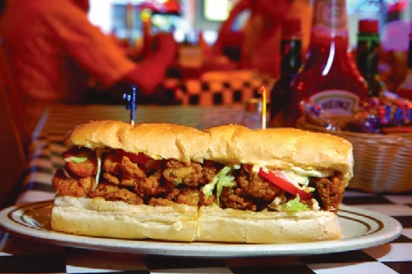Passing Through Pensacola, Plus a Little Big Easy
All I had to hear was “road trip to New Orleans” and I was packing bag. En route we explored one of Florida’s oldest cities.
A stay overnight in Gainesville broke up the 12-hour Miami-New Orleans drive on Florida’s Turnpike and I-75 and I-10, and we crossed over Escambia Bay into Pensacola on a balmy spring afternoon. A couple of fighter jets zoomed overhead, reminding me of the city’s rich naval aviation history. In 1914, Naval Air Station Pensacola was the first of its kind commissioned by the U.S. Navy.
FOOD UNDER FIVE FLAGS
Just over the bay, take the exit to Pensacola Scenic Bluffs Highway (US 90), which travels along Escambia Bay (pensacolascenicbluffs.org/map). The curving road takes you along high cliffs overlooking the bay to swamp and wetlands areas to boardwalks and nature trails along the way. From here, follow the signs to the Pensacola Historic District.
Nicknamed the City of Five Flags – Spain, England, France, the U.S. and the Confederate States ruled the city – Pensacola was settled by Spaniards in 1559, earlier than St. Augustine, but most of the settlement was wiped out by a hurricane, and it took 130 years before the Spanish returned. After that came the French, the British, the United States, and the Confederacy. Much of this heritage is reflected today in area food. Native Americans gathered oysters, shrimp, scallops, conch and crabs in Pensacola Bay and shared their knowledge of edible plants, including pecans and hickory nuts and maize, the source of that Southern staple, grits. The Spanish introduced pigs and citrus fruits – I spotted a Seville orange tree covered in fruits in Historic Pensacola Village. In the 19th and 20th centuries, the nation’s largest red snapper fishing fleet was based here, while Gulf Coast shrimp remain a big industry here.
Seafood is the thing to order here, so I went to the venerable Joe Patti’s Seafood (joepattis.com), down Main St. at A Ave. This huge seafood market, around since 1931, is chock full of fresh seafood. There’s also a steamed shrimp counter, sushi bar, deli and wine shop. You can buy fresh beignets out of a trailer in the parking lot. Next to the fishing boats is the Joe Patti Seafood Restaurant, where the fried oysters and shrimp were plump and fresh.
Pensacola’s charming cobblestoned downtown district features living history interpreters on Fridays and Saturdays and cooking demonstrations using recipes from the 18th and 19th centuries (historicpensacola.org). Other sites include the T.T. Wentworth Jr. Florida State Museum and the 1832 Old Christ Church. A tree-shaded plaza fronts the museum, leading you to Palafox St., lined with boutiques, restaurants and galleries.
On Saturdays the farmers market is on North Palafox St. between Wright and Garden St. At Main St. and Palafox is al Fresco, four Airstreams converted into an open-air food court, sort of a gentrified version of food trucks.
ON TO NOLA
The drive from Pensacola to New Orleans is about three hours. I-10 brings you right into the heart of the city at Canal and Bourbon St. New Orleans is all about food and music – lots of oysters, Cajun, French and Vietnamese cuisine, and surprises at every turn.
You may round the corner to find a boisterous band, complete with brass horns. There is nothing quite like the French Quarter in the U.S. Its charming, ornate, slightly decrepit buildings are filled with t-shirts, Mardi Gras stuff, antiques and lots of pralines. We got a taste of the city’s colorful spirituality and cultural heritage in the lobby of our hotel, International House (ihhotel.com), where a St. Joseph’s Day altar installation displayed edible symbols of Joseph and Sicily: bread in the shape of saws and carpenter tools; citrus, fennel, anise, sesame, figs and fava beans.
It’s well worth exploring Magazine Street in the Garden District with its art galleries, restaurants and boutiques, and beautiful homes and gardens. The Canal St. streetcar offers a leisurely ride to City Park. Beignets and coffee at Morning Call provide the perfect nourishment for a walk through the New Orleans Botanical Garden (neworleanscitypark.com/botanicalgarden), home to a classic conservatory, quirky train garden and sculpture garden.
{ Local Tastes }
MULLET TOSS: Not to be confused with the classic haircut, the indigenous mullet, considered a bait fish elsewhere, is a delicacy in these parts. The Flora-Bama Interstate Mullet Toss on Perdido Key is held every year the last full weekend in April. ttorabama.com
DRINK & LEARN: Sip Sazeracs and Ramos Gin Fizzes as you drink your way through New Orleans’ history. Louisiana native and cocktail historian (cooljob!) Elizabeth Pearce makes imbibing informative and entertaining. drinkandlearn.com









